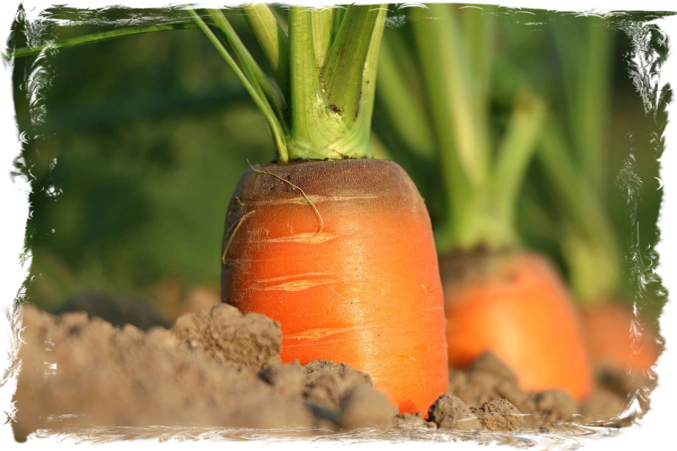The Carrot
Carrots, scientifically known as Daucus carota subsp. sativus, have a rich and storied history dating back thousands of years. Originating in Central Asia, carrots were initially cultivated for their aromatic leaves and seeds rather than their roots. It wasn't until the 10th century in Persia that orange carrots, as we commonly recognize them today, were selectively bred from their purple and yellow predecessors. From there, carrots spread across Europe, becoming a staple crop in many regions due to their versatility, nutritional value, and ease of cultivation.

Scientific Name - Daucus carota subsp. sativus
Cultivating carrots requires attention to several key practices to ensure optimal growth and yield. These practices include:
- Choose well-draining, loose soil that is free from rocks and debris. Carrots prefer sandy or loamy soil with a pH between 6.0 and 6.8.
- Carrots are cool-season vegetables and thrive in temperatures between 60°F and 75°F (15°C to 24°C). Plant seeds in early spring for a summer harvest or late summer for a fall harvest.
- Sow seeds directly into the prepared soil, spacing them about 2 inches apart in rows spaced 12 to 18 inches apart. Cover the seeds lightly with soil and water gently.
- Once the seedlings emerge, thin them to ensure proper spacing, leaving about 3 to 4 inches between each plant. Crowded carrots can result in stunted growth and misshapen roots.
- Keep the soil consistently moist but not waterlogged. Water deeply once or twice a week, especially during dry periods, to encourage root development.
- Apply a layer of organic mulch, such as straw or shredded leaves, around the carrot plants to conserve moisture, suppress weeds, and regulate soil temperature.
- Avoid excessive nitrogen fertilizers, as they can cause forked or hairy roots. Instead, use a balanced fertilizer low in nitrogen but rich in phosphorus and potassium.
- Monitor for pests like carrot rust fly and diseases such as carrot blight. Employ cultural practices like crop rotation and intercropping to minimize issues.
By following these planting and gardening practices, enthusiasts can enjoy a bountiful harvest of crisp, sweet carrots that are perfect for fresh eating, cooking, and preserving.